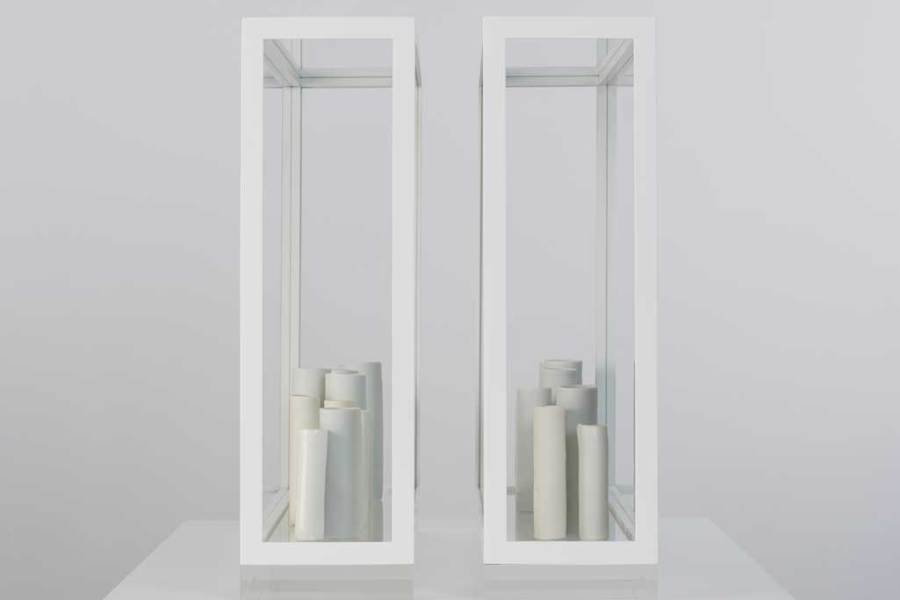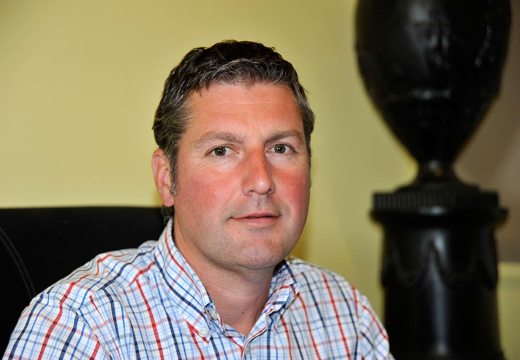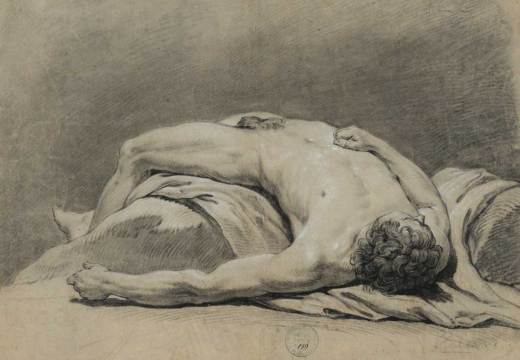There is an element of meditation involved in viewing Edmund de Waal’s exhibition, ‘On White: Porcelain Stories from the Fitzwilliam Museum’. The display gathers porcelain from the museum’s permanent collection and De Waal’s 2012 work, a thousand hours, which consists of several hundred porcelain cylinders encased in two large vitrines. De Waal has made two further pieces for the exhibition; yourself, you (two lines of small vessels that bear the marks of their making) and in plain sight, a bunch of squat pots hidden in a 1710 oak and walnut bookcase. The porcelain is quiet and modest, and creates an atmosphere of serenity, deeper even than that of its peaceful surroundings.
The exhibition’s stories are about the history, variety and fragility of porcelain production. From the museum’s collection are displayed items from Jingdezhen, the famous centre of Chinese porcelain, as well as precious stem cups, dishes supported by slender shafts whose architecture is so delicate that it is barely possible to make them. A selection of plates features some unusual designs of a group of Dutch peasants in a Chinese landscape, and a phoenix flying over Burghley House.
The porcelain itself tells stories too. In betraying the scars of its formation, yourself, you speaks of the wonder of its craft, the damage and pain involved in its creation, and its relation to natural geological formations. The grooves in its surface look like those left in valleys by glaciers. Just as three exposed lengths of porcelain at the centre of the exhibition invite you to feel their smoothness and coldness, a thousand hours asks you to explore its shape and the space it occupies: some of the porcelain vessels are positioned too high or too low to see without craning and crouching.
Its transparent glass case reveals vessels that are buried at several levels, like a cross-section of an archaeological dig. We can access only some of the porcelain, but all of it is potentially to be found. The piece reconstructs the buried histories of some of these items, such as the 16th-century fragments displayed in one of the collection cases, which were found by De Waal in the hills outside Jingdezhen. It addresses the fact that the history of porcelain is the history of its discovery.
If the porcelain tells stories through its interaction with its environment, it also teaches people to behave and experience art differently. De Waal makes us think about shape and colour, and forget utility. How we move through these rooms of porcelain is unlike the way we might stride through assortments of sculptures or wander past portraits. Like the plates and pots, we are encouraged to be quiet. We do not question or interrogate porcelain, as we might a painting. Rather, we simply inhabit the space of the bowls, vases and vessels, and await their stories. If we listen patiently, they will whisper to us.
‘On White: Porcelain Stories from the Fitzwilliam’ is at the Fitzwilliam Museum, Cambridge, until 23 February 2014.
Edmund de Waal was interviewed by Emma Crichton-Miller in the November issue of the Apollo.
Unlimited access from just $16 every 3 months
Subscribe to get unlimited and exclusive access to the top art stories, interviews and exhibition reviews.














![Masterpiece [Re]discovery 2022. Photo: Ben Fisher Photography, courtesy of Masterpiece London](http://www.apollo-magazine.com/wp-content/uploads/2022/07/MPL2022_4263.jpg)
Is the Stirling Prize suffering from a case of tunnel vision?